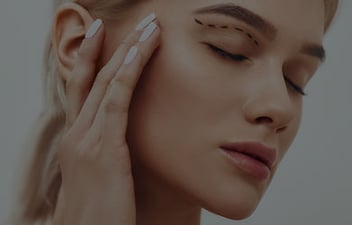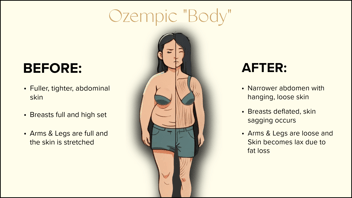
Facing the decision of rhinoplasty, patients find themselves at a crossroads between the traditional yet intricate open technique and the less invasive, nuanced closed approach. Dr. Steven Dayan, a pioneer in the field, often encounters the question: Which method is right for me? With a career dedicated to refining and advancing rhinoplasty techniques, Dr. Dayan has observed a shift in his practice, increasingly favoring the closed approach due to its ability to combine minimal downtime with exceptional outcomes.
Yet, the choice isn't one-size-fits-all.
Through years of mastering both techniques and contributing to the body of knowledge with publications like his influential paper in the Facial Plastic Surgery Journal, Dr. Dayan brings a wealth of experience to this debate. His insights not only illuminate the technical differences between open and closed rhinoplasty but also underscore the importance of tailoring the procedure to the individual's anatomy, aesthetic goals, and lifestyle considerations.
What Is a Rhinoplasty?
Rhinoplasty, more commonly known as a 'nose job,' is a surgical art that harmonizes aesthetic aspirations with structural integrity. This procedure intricately reshapes the nasal framework—comprising bone, cartilage, and soft tissues—to enhance facial symmetry and proportion. But it's not solely about aesthetics. Dr. Dayan emphasizes that the true essence of rhinoplasty lies in its dual ability to beautify the nose while optimizing its function, particularly for those facing breathing challenges.
The goals are twofold: to create a nose that 'fits' the patient's face and personal vision and to ensure the nasal passages facilitate comfortable breathing. Techniques are selected and tailored, whether sculpting the nasal tip, narrowing the bridge, or straightening the septum while preserving or enhancing nasal function. This dual focus ensures outcomes that are not only visually appealing but also improve daily life, reflecting Dr. Dayan's commitment to achieving harmony between form and function.
What Is an Open Rhinoplasty?
Open rhinoplasty (external rhinoplasty) is characterized by a small, strategic incision on the columella, the delicate strip of skin separating the nostrils. This approach lets the nasal skin gently elevate, exposing the underlying structures. This full visibility is a significant advantage, giving surgeons like Dr. Dayan the ability to perform precise alterations and complex reconstructions accurately.
The open technique is particularly beneficial for addressing more intricate issues, such as severe nasal deformities and asymmetries, or when extensive reshaping is required. It facilitates detailed modifications and the placement of grafts, ensuring the desired outcome aligns with the patient's goals.
However, it's worth noting that this method may involve a slightly longer recovery period due to the more extensive dissection required, and there's a small risk of a barely noticeable scar on the columella, which typically fades over time.
What is a Closed Rhinoplasty?
Closed rhinoplasty, a technique Dr. Dayan has refined and mastered over years of practice, involves making incisions exclusively within the nostrils. This method leaves no visible scars, offering an appealing option for patients concerned about the aesthetic aftermath of surgery. Dr. Dayan champions closed rhinoplasty for its ability to deliver transformative results with minimal external evidence of the procedure.
Dr. Dayan's approach to closed rhinoplasty (endonasal, or internal nose job) is distinguished by his sophisticated use of advanced techniques, such as precise cartilage sculpting and strategic graft placement, all performed through the limited access points within the nasal passages. This requires deep anatomical knowledge, a high degree of surgical skill, and an artistic eye to predict how internal changes will manifest on the outside.
One of the key advantages Dr. Dayan highlights in closed rhinoplasty is the reduced recovery time. Patients often experience less swelling and a quicker return to daily activities, making it an attractive choice for those seeking improvements with minimal disruption to their lives.
Dr. Dayan's innovative methods in closed rhinoplasty, such as the use of specialized grafts and sutures, allow for significant enhancements to the nose's appearance and functionality, catering to each patient's unique needs and goals.
Through his practice, Dr. Dayan has demonstrated that closed rhinoplasty can be used effectively for a wide range of nasal corrections, from subtle refinements to more pronounced changes, without needing external incisions. His commitment to achieving natural-looking results that harmonize with the patient's facial features while ensuring optimal nasal function reflects the depth of his expertise and the personalized care he provides.
Recovery Times: Open vs. Closed

Individual recovery experiences can vary based on the extent of the surgery, the patient's healing process, and whether any complications arise. Dr. Dayan emphasizes the importance of following post-operative care instructions closely to support the best possible healing and outcomes, regardless of the technique used.
Initial Swelling and Bruising:
- Open Rhinoplasty: Swelling and bruising are more pronounced due to the extensive dissection required. Patients typically notice significant improvement within the first 2 weeks, but some swelling may persist, especially around the tip.
- Closed Rhinoplasty: Swelling and bruising tend to be less severe and resolve more quickly, often within the first week. The absence of an external incision contributes to a faster reduction in visible swelling.
Return to Work and Daily Activities:
- Open Rhinoplasty: Patients may feel comfortable returning to work and most daily activities within 2-3 weeks, although they might still have some noticeable swelling and bruising.
- Closed Rhinoplasty: The quicker reduction in swelling allows many patients to resume work and normal activities within 1-2 weeks.
Exercise and Strenuous Activities:
- Open Rhinoplasty: It's generally advised to wait at least 4-6 weeks before engaging in strenuous activities or heavy exercise to ensure proper healing of the nasal structures.
- Closed Rhinoplasty: Patients can usually return to their full exercise routines a bit sooner, around 3-4 weeks, due to less extensive surgical manipulation.
Final Results:
- Open Rhinoplasty: The final shape of the nose may take up to a year to fully refine, especially for the tip area, where swelling can persist the longest.
- Closed Rhinoplasty: While some subtle refinements may continue to emerge over several months, the overall shape of the nose often settles into its new contour slightly earlier than with open rhinoplasty, typically within 6-9 months.
Scarring
With his comprehensive experience in both techniques, Dr. Dayan advises patients on the best approach based on their unique nasal anatomy, aesthetic goals, and concerns about scarring. He ensures that patients are well-informed about each method's scarring potential and the steps to minimize and manage scarring effectively.
Scarring in Open Rhinoplasty
- Location: In open rhinoplasty, the incision is made across the columella, the small strip of skin between the nostrils. This external incision is necessary to lift the nasal skin and access the underlying structures.
- Visibility: The scar from an open rhinoplasty is typically very small and discreet. Skilled surgeons like Dr. Dayan place the incision in a natural crease of the columella to minimize its visibility. Over time, this scar usually heals well and becomes barely noticeable to the untrained eye.
- Healing: The healing process for the columellar incision can vary among patients, but meticulous surgical technique and proper post-operative care can significantly reduce scar visibility. Dr. Dayan often emphasizes the importance of following tailored aftercare instructions to ensure optimal healing.
Scarring in Closed Rhinoplasty
- Location: Closed rhinoplasty involves incisions inside the nostrils, eliminating any potential for visible external scars.
- Visibility: Since all incisions are hidden within the nasal passages, there are no visible scars on the outside of the nose. This is often a significant advantage for patients concerned about the aesthetic impact of surgical scars.
- Healing: The internal incisions in closed rhinoplasty heal naturally within the concealed nasal environment. Patients typically do not need to be concerned about managing or concealing external scars during recovery.
Potential Risks And Complications
Dr. Dayan emphasizes the significance of a thorough preoperative assessment and discussion to understand these risks and tailor the surgical approach to minimize complications. His expertise allows for an individualized approach, ensuring that the chosen technique aligns with the patient's unique anatomy and goals while prioritizing safety and satisfaction.
Open Rhinoplasty Risks and Complications:
- Scarring: The most distinct difference is the small external scar on the columella, which is generally well-concealed and fades over time but is a consideration for those concerned about any visible marking.
- Swelling: Open rhinoplasty typically involves more extensive swelling, especially in the tip of the nose, which can persist longer due to greater tissue dissection and manipulation.
- Sensory Changes: There's a possibility of prolonged numbness or altered sensation in the tip of the nose, owing to the incision through columellar skin and potential disruption of nasal tip nerves.
- Structural Integrity: Given the approach involves 'opening' the nose, there's a need for meticulous reconstruction, sometimes necessitating more grafting material, which could lead to complications like graft displacement or resorption.
Closed Rhinoplasty Risks and Complications:
- Limited Access: The internal incisions provide less visibility, which might increase the difficulty of making precise corrections, particularly in complex cases, and potentially lead to asymmetry or the need for revision surgery
- Technical Difficulty: The closed approach demands a high level of expertise due to limited surgical access and visibility. In the hands of a less experienced surgeon, this could increase the risk of suboptimal outcomes.
Which is Better for You? Open or Closed?
Deciding whether open or closed rhinoplasty is better for you involves carefully considering your goals, anatomical features, and the specific concerns you wish to address. Dr. Steven Dayan emphasizes that the "best" approach is highly personalized. Here's how Dr. Dayan guides patients in making this critical decision:
Aesthetic Changes: If you're seeking significant alterations to your nose's shape, size, or complex structural issues, open rhinoplasty might provide the necessary access and visibility to achieve these changes. For subtle refinements, closed rhinoplasty might be sufficient and preferable.
Functional Improvements: For patients prioritizing breathing improvements or correcting internal structural problems, choosing between open and closed techniques will depend on the issue's complexity. Open rhinoplasty might offer better access to intricate corrections.
Complex Cases: Open rhinoplasty is often recommended for more complex cases, such as revision surgeries, significant nasal deformities, or when precise graft placement is crucial. The enhanced visibility and access can lead to more predictable outcomes in these scenarios.
Simpler Cases: Closed rhinoplasty might be suitable for simpler cases or for less extensive adjustments. This approach can offer excellent results with shorter recovery times and no visible scarring.
Recovery Time: If minimizing recovery time is a priority and your surgical goals align, closed rhinoplasty could be the better choice due to its generally quicker healing process.
Scarring Concerns: For patients concerned about visible scarring, closed rhinoplasty offers an advantage as all incisions are hidden inside the nostrils.
Impressions Face + Body
Under the esteemed guidance of Dr. Steven Dayan, Impressions Face + Body embodies the pinnacle of surgical excellence and informed decision-making in rhinoplasty. With a foundation built on Dr. Dayan's extensive expertise, marked by over 180 publications and six books, and his experience performing up to 200 rhinoplasties annually, our practice stands as a beacon of trust and authority in facial plastic surgery.
Read On


Combating "Ozempic Butt & Body"
GLP1 agonists, Ozempic, Wegovy, and Mounjaro, were originally developed for managing type 2...

Popular Facial Contouring and Sculpting Treatments
Facial contouring is a popular cosmetic procedure that can help to enhance and reshape various...

